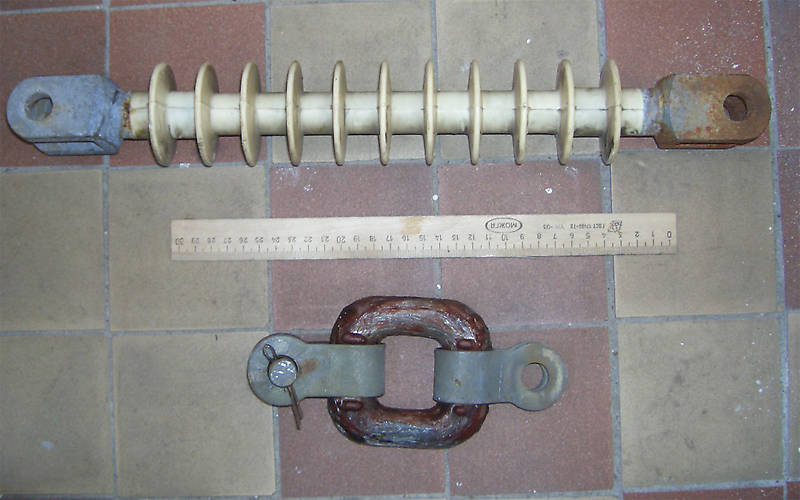two types of public transport catenary insulators
By George Sukhoff; posted December 19, 2012
View Original: Click to zoom, then click to magnify (1000 x 625) 230KB

|
Both of these are used for tram/trolleybus catenary in Russia. Trolleybus and tram systems are very common in Russia and they use unified types of hardware and insulators. There are four main styles of insulators employed on trolleybus/tram catenaries: - "long" type: it measures around 500 mm (~20 in) long and is used mostly for pull-offs, guy wires, cross-wires, messenger wire anchor points and is generally designed for greater mechanical strains. It's length is standartized to fit in between two trolleybus wires. - "short" type: it measures from 15 to 25 mm (6-10 in) and is used to hang the contact wires to the messenger wires and the messenger wires to the cross-arms (Russian trolleybus catenaries have double and triple insulation levels which means that the contact wire is always insulated form the messenger wire, the messenger wire is always insulated from the cross-arm and the cross-arm is sometimes additionaly insulated from the pole and all the guy wires and pull-offs have double insulation as well). The length is standartized by the distance between the contact wire and the messenger wire. - "buckle" type: these insulators consist of square-ring composite core and metal armature. They are known as "buckles" between the linemen and in technical literature for their similarity to belt buckles. They are used for guy wires, pull-offs and anchorings. - spacer insulators: these are used to keep apart trolleybus wires. There are also two purpose-specific types: the section insulator and the the cross-arm insulator. Back to the picture: the upper one is a "long"-type fiberglass insulator with silicone coating that was made by MedSil (currently out of production) and was mostly used in Moscow. The second one is a buckle-type insulator IP-2 (Isolator Pryazhkoviy - 2 - literary translated as buckle-type insulator, the number is the sustainable tensile load in kN). IP-2 is very common country-wide. |